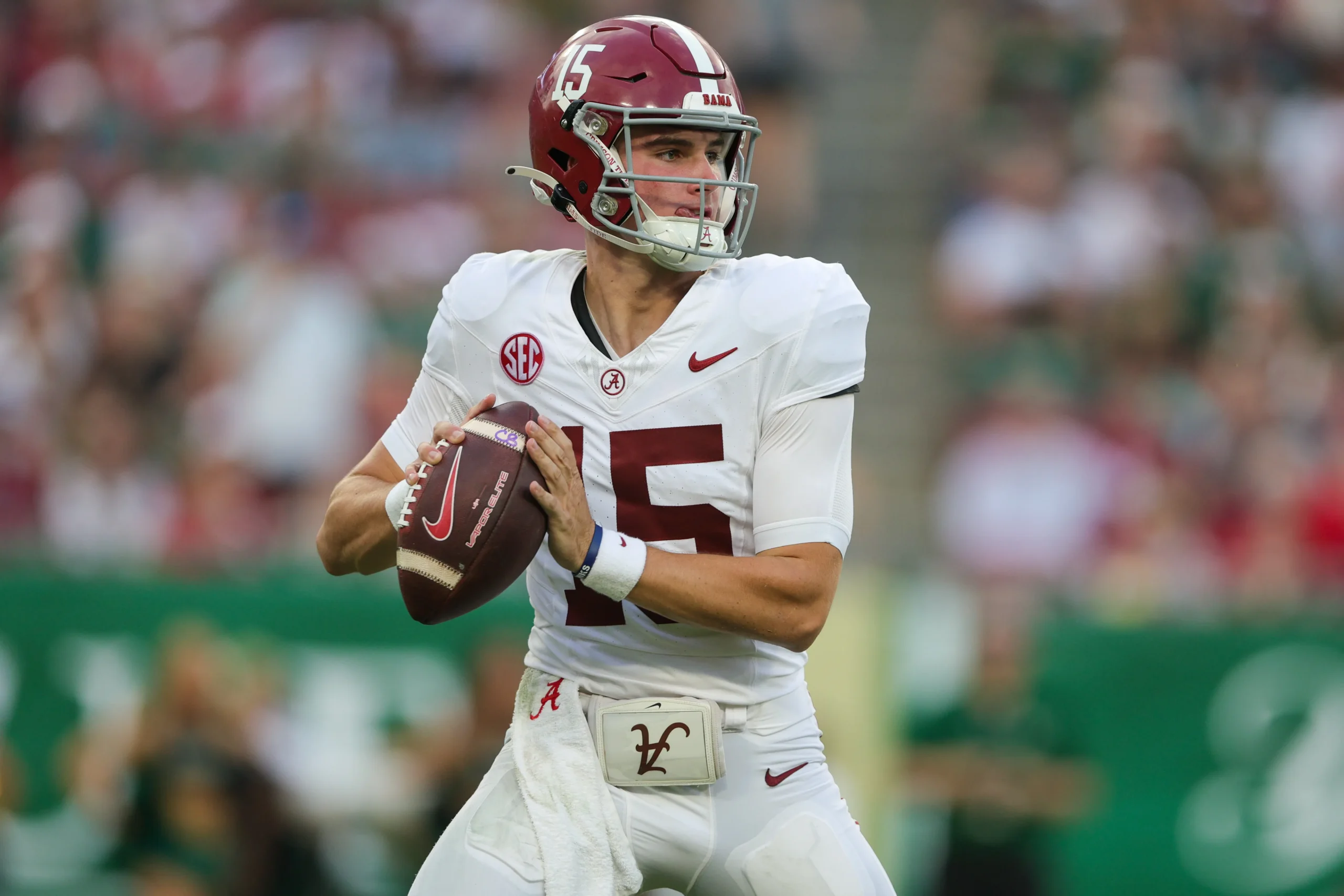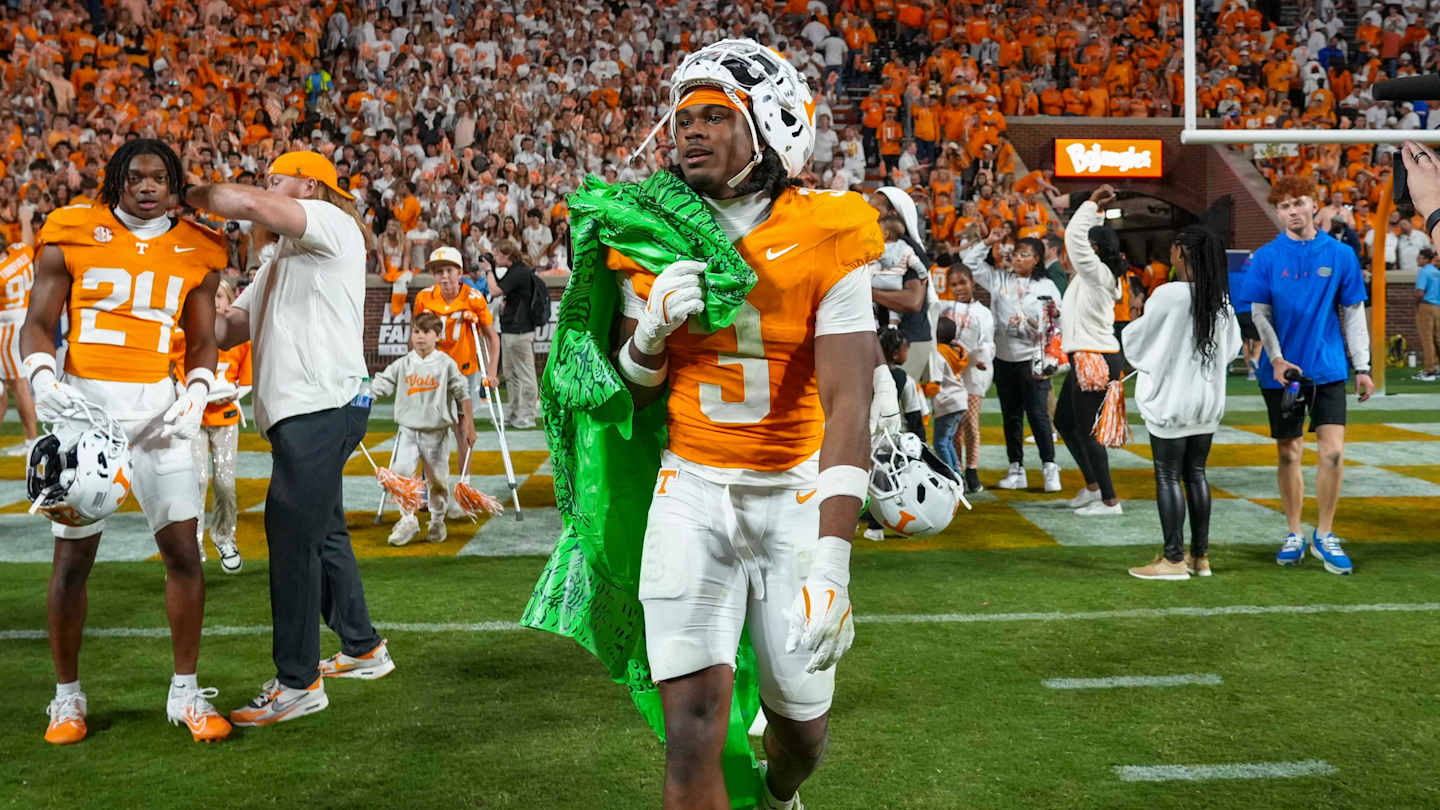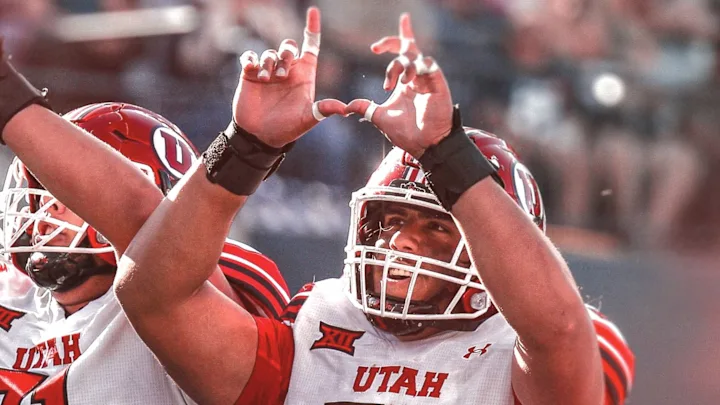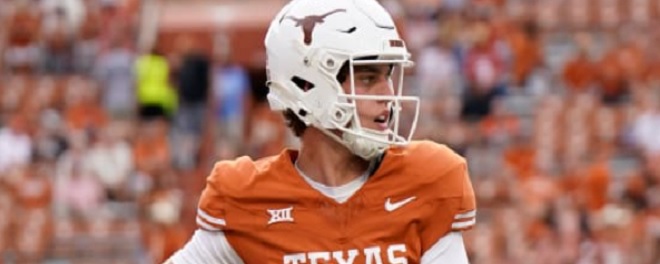By Charlie Campbell.
Send Charlie an e-mail here: [email protected]
Follow Charlie on Twitter @draftcampbell for updates.
This page was last updated April 24, 2013. Follow me @walterfootball for updates.
Position Review: 3-4 Outside Linebackers
3-4 Outside Linebacker Class
Early-round talent: A
Mid-round: B
Late-round: C-
Overall grade: B
2012 prospects vs 2013
Bruce Irvin < Dion Jordan
Melvin Ingram < Jarvis Jones
Shea McClellin < Ezekiel Ansah
Chandler Jones > Barkevious Mingo
Whitney Mercilus > Damontre Moore
Nick Perry > Alex Okafor
Courtney Upshaw > Corey Lemonier
Andre Branch > Jamie Collins
This is a quality class of 3-4 outside linebackers with more high-end talent than the 2012 group. However, last year’s draft featured six 3-4 outside linebacker candidates who went in the the first round with two more who were selected early in the second round. The 2013 class has probably four first-round picks. 2012’s class may have had more quantity, but the 2013 NFL Draft class features more quality prospects.
What makes these prospects a little harder to mesh together is some players who were 3-4 outside linebacker prospects were drafted to play defensive end or outside linebacker in a 4-3 defense. That will definitely happen again this April.
In my opinion, Jarvis Jones is the best 3-4 outside linebacker from either draft class. He was a consistent game-changer against elite competition the past two seasons. However, Dion Jordan is going to be selected before Jones. Mingo and Ansah will probably go ahead of Jones as well. Jones might fall to the picks at the bottom of the top 20 like Ingram and McClellin.
If you were to merge the two classes, Jordan would be the top-rated prospect entering the NFL. He is clearly better than Irvin. Jones and Ansah are also much better prospects than Irvin, so 2012’s top pick would be fourth behind the top three of 2013. Irvin, Mingo, Ingram, McClellin and Jones are comparable as picks in the No. 11-20 range. However, Jones may turn into the best pro from that group.
A year ago, Mercilus was a less flawed prospect than Moore is right now, so Moore would fit in behind Mercilus. Okafor is a fringe first-rounder, while Perry went late in Round 1. Okafor would go behind Perry and ahead of Upshaw. Lemonier and Thomas would both go behind Branch.
There are a number of good 3-4 outside linebacker candidates who could go in mid-rounds of the 2013 NFL Draft. Options include Stanford’s Chase Thomas, Connecticut’s duo of Sio Moore and Trevardo Williams.
Safest Pick: Dion Jordan, Oregon

Jordan is my choice because he is such a perfect fit as a 3-4 outside linebacker. He is a fast and fluid athlete who is a natural playing in space. Jordan excelled at everything a 3-4 edge defender is asked to do for the Ducks. He rushed the passer, dropped into coverage and was good against the run. Jordan (6-6, 248) just needs to add some weight to his frame, but he looks like a near prototype for a 3-4 outside linebacker in the NFL.
Biggest Bust Potential: Barkevious Mingo, LSU

I’ve been a skeptic of Mingo’s for a long time. Others rate him higher, but he never produced as much as he was capable of for LSU. Mingo totaled 12.5 sacks the past two seasons with only 4.5 in 2012. He was consistently run over in the ground game. There is no doubt that Mingo is an explosive edge-rusher, but he needs more pass-rushing moves. Mingo looks like a one-trick pony, and one trick typically isn’t good enough to beat NFL offensive tackles. I wouldn’t be surprised if he turns into a bust.
3-4 Outside Linebackers Rankings by Attributes
Pass Rush:
NFL prototype: DeMarcus Ware, Cowboys
- Jarvis Jones
- Dion Jordan
- Damontre Moore
- Barkevious Mingo
- Ezekiel Ansah
- Jamie Collins
- Alex Okafor
- Corey Lemonier
Recap: The NFL is a passing-driven league, and 3-4 defenses need edge-rushers who can consistently get to the quarterback. Rushing the passer is the primary responsibility for a 3-4 outside linebacker. Some college defensive ends can struggle to make the transition to rushing off the edge as they move out wider from offensive tackles. Other players thrive with the change.
There is no doubt in my mind that Jones is the best pass-rusher in this class. The junior led the nation in sacks with 14.5 this season. He had 13.5 sacks to lead the SEC in 2011. Jones is a dynamic edge-rusher who combines speed with good hands and pass-rushing moves. He has a nose for the quarterback and showed the ability to beat double teams. Jones is a devastating pass-rusher.
Jordan only had five sacks in 2012, but he is a better pass-rusher than that total indicates; Oregon often dropped him into pass coverage. Jordan is very fast off the edge and should be more productive in the NFL.
Behind Jones, Moore had the most sack production in this group. He had 12.5 sacks in 2012 and 8.5 as a first-year starter in 2011. Moore beat tackles with speed rushes as well as having success against guards. Coordinators can get creative with how they rush Moore.
Mingo is a bolt of lightning off the snap, but needs to add strength to fight off blockers. His speed rush is too predictable.
Ansah is like Jordan in that he is a better rusher than the numbers (4.5 sacks) indicate. BYU played Ansah out of position often at defensive tackle. If you did this list only on potential for the NFL and did not factor in college production, Ansah could be in the top three.
Collins had 10 sacks last year and 6.5 sacks the year before. He has a burst off the edge and has developed some moves.
Okafor was a consistent pass-rusher for Texas the past two seasons as he totaled almost 20 sacks. He has a nice repertoire of moves with speed and strength. The Longhorns occasionally had Okafor rush as a standup linebacker, and he did well in that role. Okafor enters the NFL with nice versatility to fit in a 4-3 or 3-4.
Lemonier had 9.5 sacks in 2011 before dropping down to 5.5 sacks this year. He has some speed and strength, but needs more development.
Run Defense:
NFL prototype: Anthony Spencer, Cowboys
- Ezekiel Ansah
- Damontre Moore
- Jarvis Jones
- Jamie Collins
- Alex Okafor
- Dion Jordan
- Corey Lemonier
- Barkevious Mingo
Recap: Many 3-4 defenses typically don’t require their outside linebackers to be an asset against the run because they rely on their 3-4 defensive ends, nose tackle and inside linebackers to lead the way in run defense. However, the success of the read option is changing that as the edge linebackers play a critical role in defending against it. Being tough versus the run could become a more important attribute in the seasons to come.
Ansah is the best run-defender for the NFL in this class. He had 62 tackles in his final collegiate season, but often did that after battling guards and centers as a defensive tackle. When playing on the edge, Ansah will be able to use that experience to help shed blocks from weaker tackles and tight ends. The 274-pound Ansah should become an asset as a run-defender playing 3-4 outside linebacker or 4-3 end.
Moore led his team in tackles with 85 and records 21 tackles for a loss. Moore does need to get stronger so he can avoid getting pushed around on runs coming straight at him, but he gets off of blocks and chases down ball-carriers. I think once Moore gains strength in the NFL, he’ll be a difference-maker against the run.
Jones was a good pursuit run-defender for Georgia. He struggles with downhill runs coming straight at him, but that isn’t abnormal for linebackers who weigh less than 250 pounds. Jones had 85 tackles with 24.5 tackles for a loss in 2012 and was tremendous at chasing down runs from the back side.
Collins was a tough defender for Southern Miss with 92 tackles in 2012. He is physical in the box and does well in pursuit. Okafor had 54 tackles in this year. He has the potential to be a strong run-defender on the edge in a 3-4.
Jordan had only 44 tackles in 2012 for Oregon, but he is better than the numbers indicate. The Ducks blew out so many opponents that the opposition was quickly passing the ball. Jordan has instincts and attacks ball-carriers.
Lemonier did not do well with runs coming straight at him in 2012. He’s added muscle since the season and should be better in run defense as a 3-4 outside linebacker rather than his college position as a 4-3 end.
Mingo is a pure liability at defending the run. He gets pushed and ragdolled by offensive linemen. There is no doubt that Mingo needs to improve his run defense dramatically.
Dropping Into Coverage:
NFL prototype: Clay Matthews, Packers
- Dion Jordan
- Jarvis Jones
- Barkevious Mingo
- Ezekiel Ansah
- Damontre Moore
- Jamie Collins
- Alex Okafor
- Corey Lemonier
Recap: The NFL is a passing-driven league, and 3-4 defenses need linebackers who can function in space while dropping into pass coverage. The 3-4 defense is predicated on variety, so it requires linebackers to fall back into pass coverage to avoid predictability.
Jordan is phenomenal at dropping into coverage. He is fast in his backpedal and is such a fluid athlete moving in space. In the open field, Jordan covers a lot of grass. He has demonstrated ability to defend running backs and tight ends. His excellent pass coverage is a truly rare attribute for a college 3-4 outside linebacker.
Even though Jones was mainly rushing the quarterback for Georgia, he did well dropping into coverage when asked to. Jones moves well in space and has good instincts. At times, Mingo would drop into coverage for LSU and he did well. Mingo’s speed and athleticism mean he has the potential to do this well in the NFL.
Ansah flashed in pass coverage. He is a big fluid athlete with leaping ability to disrupt passing lanes.
Moore, Collins, Okafor and Lemonier were all pass-rushers. Each is going to need development in pass coverage if drafted into a 3-4.
Speed:
NFL prototype: Aldon Smith, 49ers
- Barkevious Mingo
- Dion Jordan
- Ezekiel Ansah
- Jarvis Jones
- Corey Lemonier
- Alex Okafor
- Damontre Moore
- Jamie Collins
Recap: Speed is necessary to be an effective 3-4 outside linebacker. A quick first step makes a big difference in applying pressure on the quarterback. The elite 3-4 defensive ends are explosive and are extremely fast flying into the backfield.
Mingo has rare speed and explosion coming off the edge. He is lightning in his first step and sprints like a wide receiver. This is Mingo’s best attribute, and his elite speed is very rare for a linebacker.
Jordan is very fast and explosive. He maintains good speed when he redirects and flows to the ball quickly. Jordan’s speed is another part of his excellent skill set.
Ansah is the largest of the prospects above, yet he is one of the fastest. That is what makes him such a huge upside player. Ansah is very fast and is explosive off the snap. That should be even more evident once he learns the game and is developed by NFL coaches.
Coming off the edge, Jones is a fast defender. He doesn’t have the initial explosion of the top three, but still has good speed. Lemonier is a fast defender coming off the edge as well. Scouts have told WalterFootball.com that Lemonier is a little stiff, but that could be in part because he just added a lot of bulk to his frame.
Okafor was one of the fastest defensive ends in the Big XII. He may not have the speed to beat NFL left tackles, but should provide some mismatches going against right tackles.
Moore played faster than he timed at the Combine, but doesn’t have real explosion off the snap. Collins has enough speed for the NFL.
Strength:
NFL prototype: Tamba Hali, Chiefs
- Ezekiel Ansah
- Alex Okafor
- Corey Lemonier
- Damontre Moore
- Dion Jordan
- Jamie Collins
- Jarvis Jones
- Barkevious Mingo
Recap: 3-4 outside linebackers need the strength to fight off offensive linemen, especially when teams slide protections their direction with double teams. Having the power to shed blocks separates the effectiveness of a lot of players.
Ansah is the strongest of these prospects by far. He weighs the most and has the power to bench press blockers off of him to drive them backward. Ansah’s strength will be an asset in the NFL.
Okafor has a good basis of strength at 261 pounds. He is the second-heaviest next to Ansah and could push 270 after building his body in an NFL strength and conditioning program.
Lemonier played in the 240s, but he now is up 255 pounds. The added strength should help him to shed blocks in the NFL. Moore, Jordan and Collins all have decent strength. However, all three need to improve on it for the NFL.
Jones has deceptive strength. He doesn’t weigh that much (240 pounds), but has strong hands to fight off blocks. Still, Jones could use more power for the NFL and scouts have told WalterFootball.com that Jones is not a hard worker in the weight room.
Mingo said he played the 2012 season weighing in the 230s. His weight was up to 240 at the Combine, but his lack of strength is a real flaw in his game.
Motor:
NFL prototype: James Harrison, Steelers
- Jarvis Jones
- Dion Jordan
- Ezekiel Ansah
- Jamie Collins
- Alex Okafor
- Damontre Moore
- Corey Lemonier
- Barkevious Mingo
Recap: The majority of great pass-rushers have motors that don’t quit. Effort can make the difference between an edge-rusher having 12 sacks in a season versus eight.
Jones is utterly relentless. Every snap, he’s looking to make a play and always gives good effort. Scouts have said that Jones is quiet during the week, but obviously he shows up on game day. Jones’ non-stop motor can be seen with how many plays he ends up making after being initially blocked. Jones doesn’t quit on plays and keeps fighting. A great motor really sets him apart.
Jordan definitely has a good motor. He fulfills his assignments at a high level and you don’t see him loafing when a play goes away from him. Ansah is the same way. He pursues and chases after ball-carriers down field.
Collins and Okafor played with steady motors in college. Neither one was prone to taking plays off.
Lemonier doesn’t have a bad motor, but it isn’t special either. Mingo’s effort seemed to vary within games with him gearing up more for pass-rushing plays versus obvious plays defending the run. There were games that he disappeared.
Upside:
NFL prototype: Aldon Smith, 49ers
- Dion Jordan
- Ezekiel Ansah
- Barkevious Mingo
- Damontre Moore
- Jarvis Jones
- Jamie Collins
- Corey Lemonier
- Alex Okafor
Recap: This group of edge-rushers has a lot of upside. All of these players have room for improvement as professionals, and none of them is close to being a finished product.
It was a tough call between Jordan and Ansah for maximum upside. Both players have amazing physical skill sets. Jordan was the pick because the variety in his skill set. He used his athletic ability to play other positions like tight end and defensive end in college. Jordan even ran the ball for a two-point conversion last year. Ansah has tons of talent to develop as well. Both players should be better in the NFL than they were in college.
Mingo has a ton of upside if he can get stronger and better at defending the run. Mingo should add more pass-rushing moves, too, but his huge potential is what pushes him into top-20 consideration.
Even though Moore had a poor performance at the Combine, he has upside to develop. Moore is 250 pounds with the frame to get bigger. The early entry could become a force if he lands with a good coaching staff who lights a fire underneath him.
Jones, Collins and Lemonier have upside for the NFL. It will be tough for Jones to match his collegiate sack totals, but he still can improve his game. Okafor may have the least amount of upside of this group, but he still has some room for improvement.
Forced Fumbles:
NFL prototype: DeMarcus Ware, Cowboys
- Jarvis Jones
- Alex Okafor
- Dion Jordan
- Jamie Collins
- Corey Lemonier
- Damontre Moore
- Barkevious Mingo
- Ezekiel Ansah
Recap: Defenses and teams thrive off turnovers, so a pass-rusher who has the skills to force fumbles are game-changers. Many players go for strip sacks, but some are more effective than others.
Not only did Jones lead the nation in sacks in 2012, he also led the nation in forced fumbles. Jones was excellent at slapping the ball out of quarterbacks’ hands while taking them down for sacks. Jones also forced fumbles on ball-carriers. He had a forced fumble on Florida tight end Jordan Reed inside the 10-yard line late in a crucial victory for Georgia. Entering the NFL, Jones has great instincts and timing for slapping the ball out of offensive players hands.
Okafor thrived at forcing fumbles as a senior. He had some forced fumbles on plays on which he couldn’t tackle the quarterback, but was cognizant to slap the ball out instead – as West Virginia’s Geno Smith is well aware. Okafor obviously has developed some strip-sack tools.
Jordan notched three forced fumbles in 2012, but he should be better at this in the NFL after gaining strength. Jordan should be able to produce them against quarterbacks and while tackling receivers downfield.
Collins had four forced fumbles last year and made improvements on his ability to create turnovers. Lemonier only recorded one forced fumble in 2912, but had five forced fumbles in 2011. Moore was similar with one in 2012 but four in the previous season. It is surprising that Moore didn’t have more forced fumbles in 2012 given his 12.5 sacks. Adding more strength could make the difference.
Mingo had one forced fumble this year and three total over 2011 and 2010. It wouldn’t be surprising if he doesn’t add this ability in the NFL. Ansah had only one forced fumble in his collegiate career, so that remains a skill he needs to work on. His size and speed definitely give him the potential to produce more. The team that lands Ansah will definitely want to work on that with him.
|
|
NFL Picks - Dec. 21
NFL Power Rankings - Dec. 17
2026 NFL Mock Draft - Dec. 17
Fantasy Football Rankings - Sept. 1




